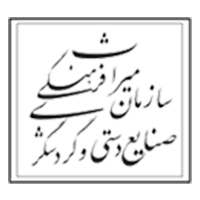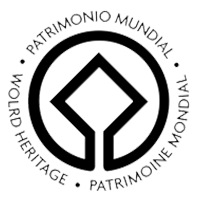History
A History of Archaeological Excavations
In early 1935, through their aerial visits, Anglo-Persian petroleum company staff realized a huge mound inside two enclosure walls near the Dez River. One of the New Zealander geologists of the company, named Boraven, went on the mound and found several inscribed bricks. They, then, informed the French archaeological expedition residing at Susa. On February 21, 1935, two French archaeologists, R. P. Van der Meer and Louis le Breton, made their first visit to the mound; they found and took with them to Susa some inscribed bricks mentioning the name of King Untaš Napiriša or Untaš dGal. In the hope of gaining more information, Dr. J. M. Unvala accompanying a number of workers went to the mound on a survey and collected several inscribed Elamite bricks, one inscribed Semitic brick, and pieces of a decorative panel with the name of Untaš dGal from the surface.

Figure 1: A photo of Tchogha Zanbil before excavations
After preliminary visits, the French expedition at Susa and Iranian government representatives outlined a five-year excavation plan at Tchogha Zanbil under de Mecquenem and Michalon. These two archaeologists carried out a total five seasons of excavation at Tchogha Zanbil over the years 1936 to 1939 and 1945. As a result, some walls, parts of waterways, parts of a ziggurat, several buildings in the southeast of the temenos, and architectural units inside the second and third enclosure walls were exposed.
Excavations culminated in exposing the city of Dūr Untaš were mainly done by the team under Roman Ghirshman during his nine years of activity at this site. Following de Mecquenem, Ghirshman became the head of French excavations in Khuzestan, largely at Susa. Over the course of nine seasons of excavation (1951-1962), Ghirshman succeeded in digging a vast area at Tchogha Zanbil including the ziggurat, temples, palaces, residential units, and three enclosure walls with an area of 100 hectares.

Figure 2: Ghirshman's excavations in the northeast of the ziggurat
Archaeological activities at Chogah Zanbil were resumed after a long-term halt in 1998. The new phase began by Mehdi Rahbar opening a few test trenches at the site. A year later, in 1999, a new chapter of archaeological studies with the usage of modern methods was started by the works of Mainz University under Dr. Behzad Mofidi.

Figure 3: A view of Tchogha Zanbil before new excavations
As a part of the new studies at Tchogha Zanbil, surface surveys were done in the area; consequently, some constructions were detected in its various spots. Moreover, the entire area of the city was reticulated into squares, and, in order to identify the function of constructions and the historiography of the site, its pottery and other objects were collected from each square. Also, geophysical surveys were carried out on 33 hectares of the whole area of the city over a three-year time period. In the winter of 1999, for identifying different parts of the rainwater disposal system and in the fall of 1999 and the spring of 2000, for realizing both the structure and function of the gates of the middle enclosure wall as well as the city’s communicative paths, the site was briefly excavated at some spots. Similar excavations were also done in the southern parts of the temenos in 2001 and 2002.




